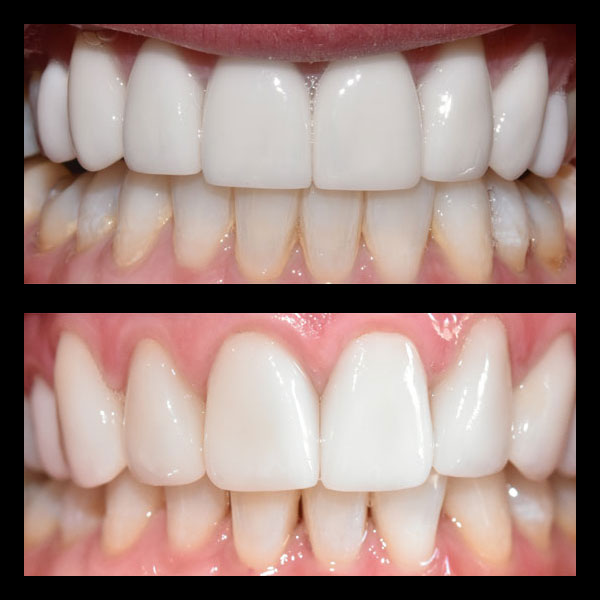Grasping Dental Implants
Unveiling the Concept and Essence of Dental Implants
Dental implants are the cutting-edge marvels of contemporary dentistry, crafted to replace missing teeth with unparalleled precision. These implants are titanium rods, surgically embedded into the jawbone, acting as sturdy, artificial roots. Through the magical process of osseointegration, they form an inseparable bond with the bone, creating a robust base for crowns, bridges, or dentures to latch onto.
Embarking on the Journey of Dental Implants
The voyage to an immaculate smile with dental implants unfolds across several meticulously calibrated stages:
- Initial Consultation: Your dentist examines your oral landscape, gauging your candidacy with advanced imaging that scrutinizes your jawbone’s architecture.
- Surgical Embedding: Titanium post insertion into the jawbone transpires, typically under local anesthesia or sedation.
- Healing Interlude: A span of months is requisite for the implant to meld seamlessly with the jawbone, with a temporary crown often making an appearance during this phase.
- Abutment Installation: Post-healing, an abutment, or connector, is attached, prepared to host the crown or bridge.
- Final Flourish: The process culminates with a tailor-made crown, bridge, or denture being affixed, showcasing your revived smile.
Why Dental Implants Shine in Tooth Replacement
Dental implants beckon with myriad advantages, making them a favored choice for discerning individuals. Their allure includes:
- Endurance and Resilience: With diligent care, implants can be your lifetime companions, far outstripping other alternatives.
- Authenticity in Appearance and Function: Mirroring and emulating natural teeth in look and function, they bestow a natural and unwavering confidence.
- Jawbone Preservation: Stimulating the jawbone, they forestall the bone decay that typically accompanies tooth loss.
- Superior Oral Health: Requiring no support from adjacent teeth, implants help maintain the integrity of surrounding pearly whites.
Ideal Candidates for Dental Implants
Diverse individuals may find dental implants suitable, provided certain factors align:
- Optimal Oral Health: Healthy gums and sufficient bone density are must-haves, though bone grafting can address deficits.
- Non-Smokers: Smoking hampers healing, jeopardizing implant success.
- Dedicated Oral Hygiene Advocates: Proper upkeep and regular dental visits are crucial for ensuring the longevity of implants.
- General Health Considerations: Some medical conditions might affect suitability, warranting thorough medical history review by your dentist.
At Incredible Smiles in Boulder, our adept team is committed to sculpting your dazzling and functional smile through bespoke dental implant solutions.
Delving into Dental Bridges
Decoding Dental Bridges
Dental bridges stand as prosthetic marvels, bridging the void left by missing teeth. Comprising crowns on either side of the gap—anchored by abutment teeth—and pontics (false teeth) nestled in between, these constructs employ materials like porcelain, gold, or alloy for a fusion of durability and natural aesthetics.
The Odyssey of Acquiring Dental Bridges
Securing dental bridges involves a series of dental appointments. Initially, abutment teeth are recontoured to make space for crowns. Impressions taken serve as blueprints for crafting the bridge, pontic, and crowns. Subsequently, a temporary bridge might be fitted to protect vulnerable teeth and gums. In the final visit, the permanent bridge is assessed, tweaked, and cemented, concluding the restoration of your smile.
Charm and Efficacy of Dental Bridges
Dental bridges present a myriad of benefits for those with missing teeth, rejuvenating one’s smile and reclaiming the ability to chew and articulate words. They also maintain facial contours and prevent the drift of remaining teeth. Compared to dentures, bridges offer greater stability and do not need to be removed for cleaning. Moreover, they generally demand less time than implants to achieve completion.
Aptness for Varied Patients
Dental bridges cater well to those losing teeth due to decay, trauma, or other causes, especially when neighboring teeth are healthy and sturdy. They also stand as viable alternatives for individuals who may not be implant candidates due to insufficient jawbone, financial restrictions, or health conditions. However, the upkeep of oral hygiene is paramount for their durability, as abutment teeth stability is vital.
Confronting Dental Implants with Bridges
Endurance and Robustness
Assessing implants versus bridges, longevity and durability are pivotal. Dental implants, crafted from durable, biocompatible materials like titanium, often endure a lifetime with appropriate care, fusing with the jawbone for unrivaled stability. Dental bridges, while resilient, typically serve for 10-15 years, necessitating potential replacements or repairs over time.
Investing Wisely
Financial considerations are significant. While implants command a higher initial outlay, costs vary depending on implant count and preparatory requisites. Bridges usher in lower upfront costs but might entail additional expenses over time due to maintenance and potential replacement. Hence, gauging the long-term savings associated with implant durability is prudent.
Visual Appeal and Authenticity
Aesthetic finesse is crucial. Dental implants emulate natural teeth superbly, seamlessly merging with the jawbone to avert bone loss that might distort facial structure. Bridges, though aesthetically pleasing, may not match implants’ lifelike realism, as they rely on surrounding teeth for support, occasionally creating noticeable disparities.
Influence on Neighboring Teeth and Oral Health
The impact on adjacent teeth and oral well-being varies. Implants, independently embedded in the jawbone, do not affect neighboring teeth but instead aid in maintaining bone density and stability. Conversely, bridges depend on neighboring teeth for support, necessitating filing these teeth down, which may weaken them, rendering them more prone to decay and damage over time.








